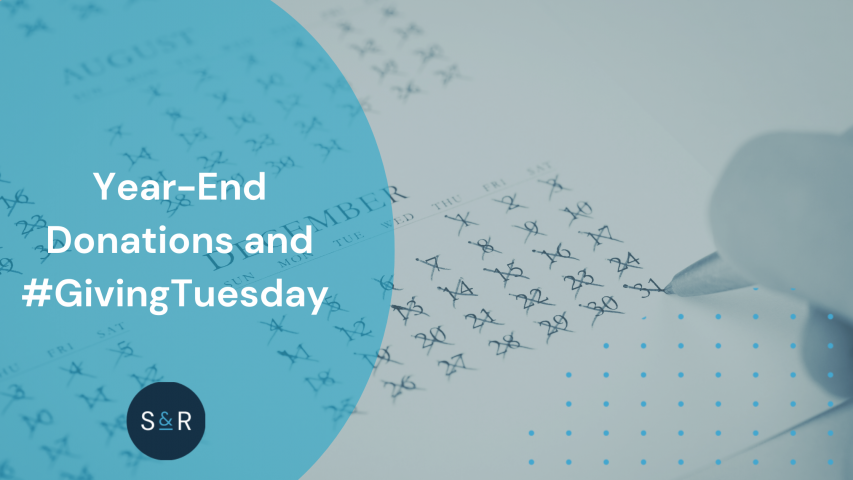Year-End Donations and #GivingTuesday

14 Ways to Support Small Business
November 22, 2022
LPL Financial Research Outlook 2023: Finding Balance
December 6, 2022A list of things to consider as you think about year-end charitable donations
With its family traditions and festive celebrations, the holiday season is the most wonderful time of the year. And according to GivingTuesday.org, the giving in the U.S. alone totaled $2.7 billion to nonprofits and community organizations on #GivingTuesday in 2021, a 6% increase from 2020.
Unfortunately, despite the greatest of intentions,
many will inevitably make mistakes in how they give, especially if they wait until the last minute. So, here is a list of things for you to think about as you consider your year-end charitable donations.
Make a Plan
Ideally, at the beginning of every year – with your financial professional – you would map out a plan to maximize the tax benefits of your giving. Really think through what is important to you and what you want
to support. Is it an organization that supports literacy? Or provides food? Or shelter for families? Creating
a plan will help you be less reactive and feel less boxed in when friends ask for your charitable support.
Research Your Charity
It’s easy to get fooled by a charity’s name so you need to do your homework. And beware of scam artists pretending to represent an organization that doesn’t exist. Read a charity’s financial statements
to see how they spend their (your) money. Even better, volunteer before you write a check.
Donating Stock
If you have owned stock for more than a year and it has appreciated, then don’t sell it first and then give the cash to charity. Those appreciated assets can be donated directly to charity without you or the charity incurring capital gains taxes (consult your tax professional to be sure).
Selling Your Personal Info
Quite a few charities will rent or sell the addresses, phone numbers, email addresses and detailed social media profiles of their donors, which means you might start getting a bunch of unwanted calls, emails and friend requests. Make sure you review a charity’s privacy policy before you give them your information. And many times, you have to actively “Opt Out” to ensure your personal information is not used.
Ask for A Receipt
Remember, for charitable contributions of $250 or more, you need a donor’s acknowledgement letter. And generally it’s a good idea to obtain receipts, especially when donating goods.
Don’t Delay
Shockingly, a whopping 12% of all giving occurs in the last 3 days of the year! But if you mail a check postmarked after December 31st, then you might run into trouble. Make it easy on yourself and don’t wait until the last minute.
Money Can’t Buy Happiness, But
Maybe Donating to Charity Can?
Consider research from Elizabeth Dunn of the University of British Columbia, Lara Aknin at Simon Fraser University and Michael Norton at Harvard Business School. Essentially what they found in their study is the following:
- Spending money on other people has a more positive impact on happiness than spending money on oneself
- Spending more of one’s income on others predicted greater happiness
Discuss with Your Financial Professional
If you have any questions or need help mapping out your Charitable Plan, set an appointment to discuss with your financial professional.
Important Disclosures
The opinions voiced in this material are for general information only and are not intended to provide specific advice or recommendations for any individual.
All information is believed to be from reliable sources; however LPL Financial makes no representation as to its completeness or accuracy.
This article was prepared by RSW Publishing.
LPL Tracking #1-05318847





